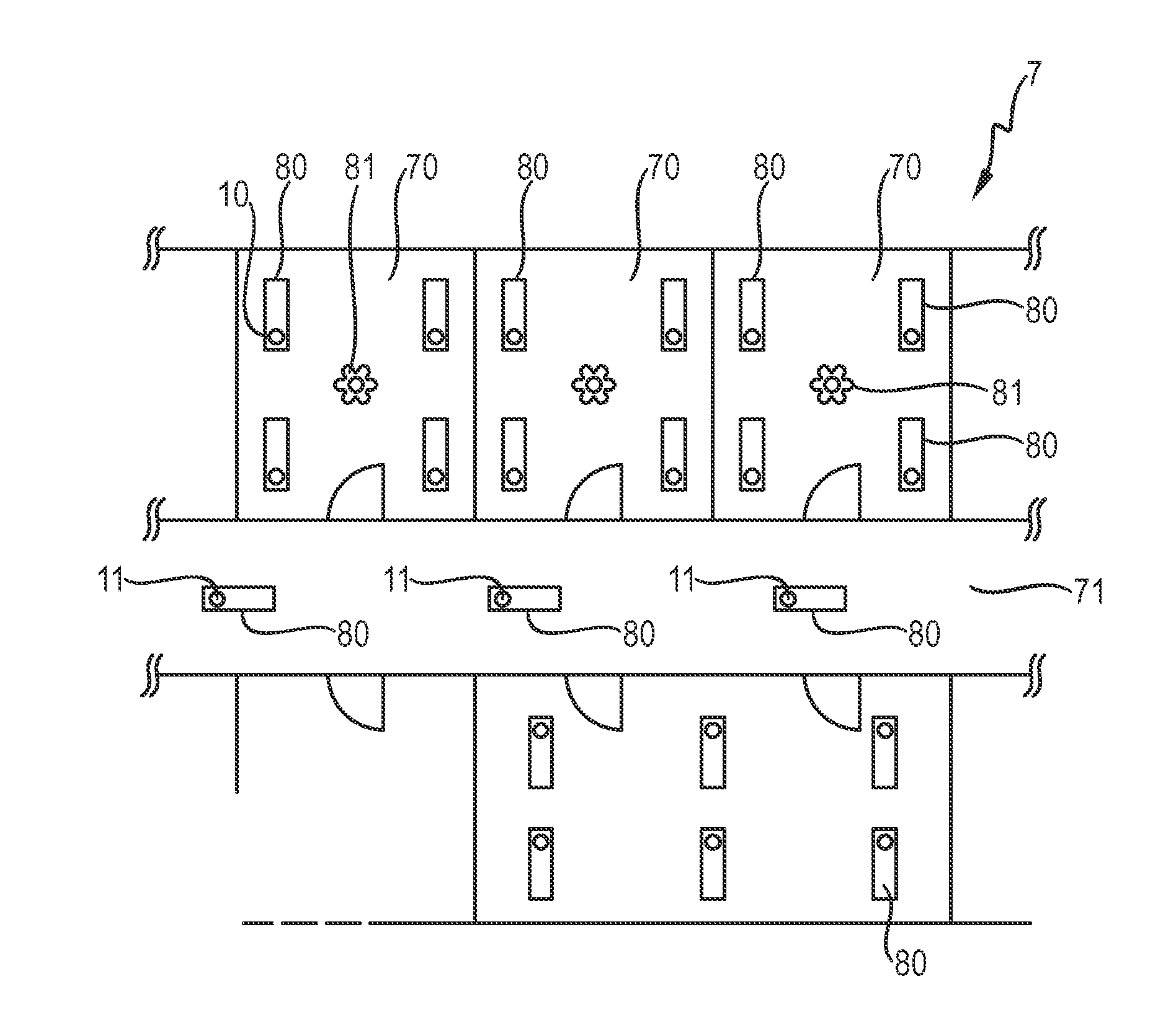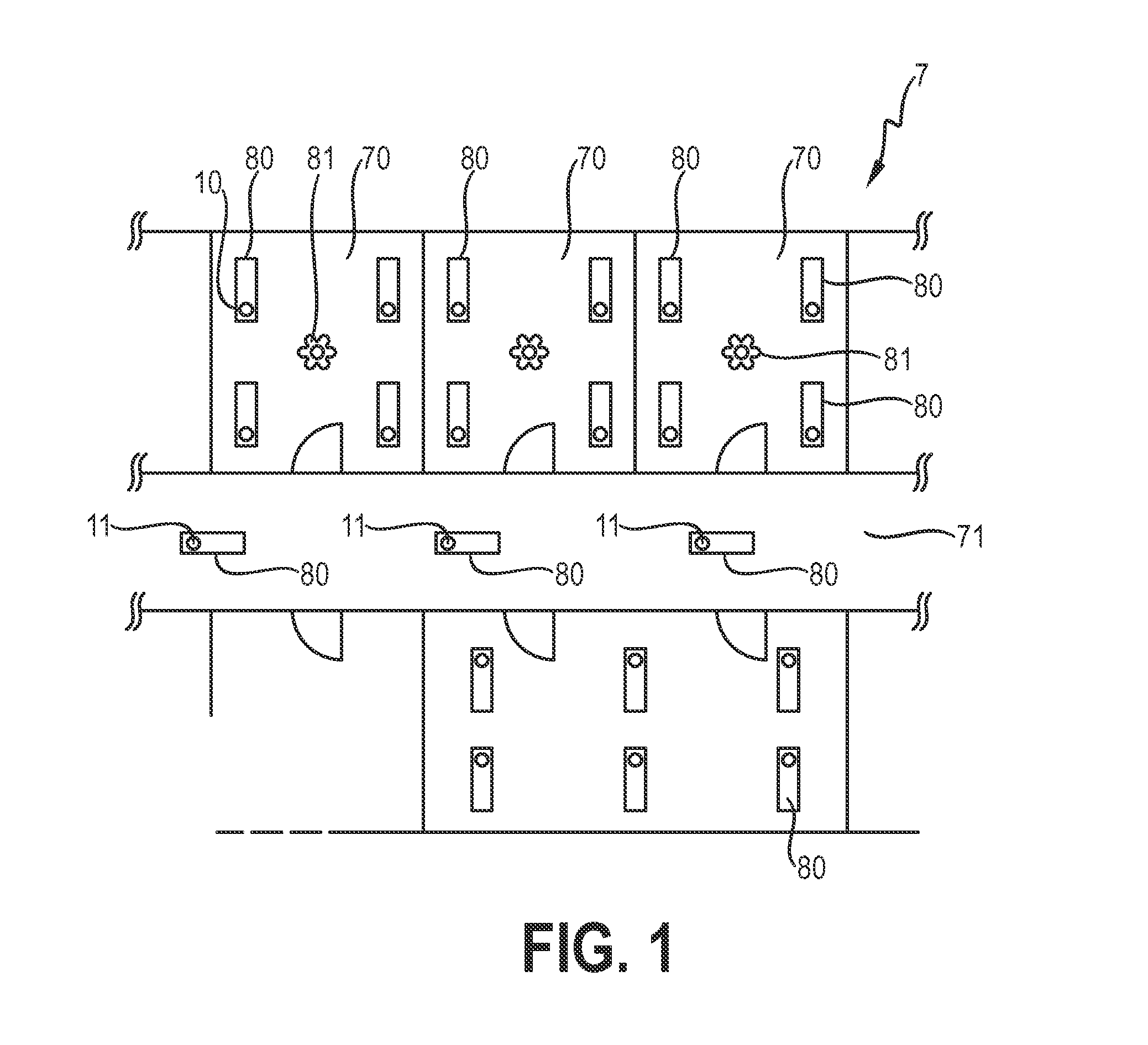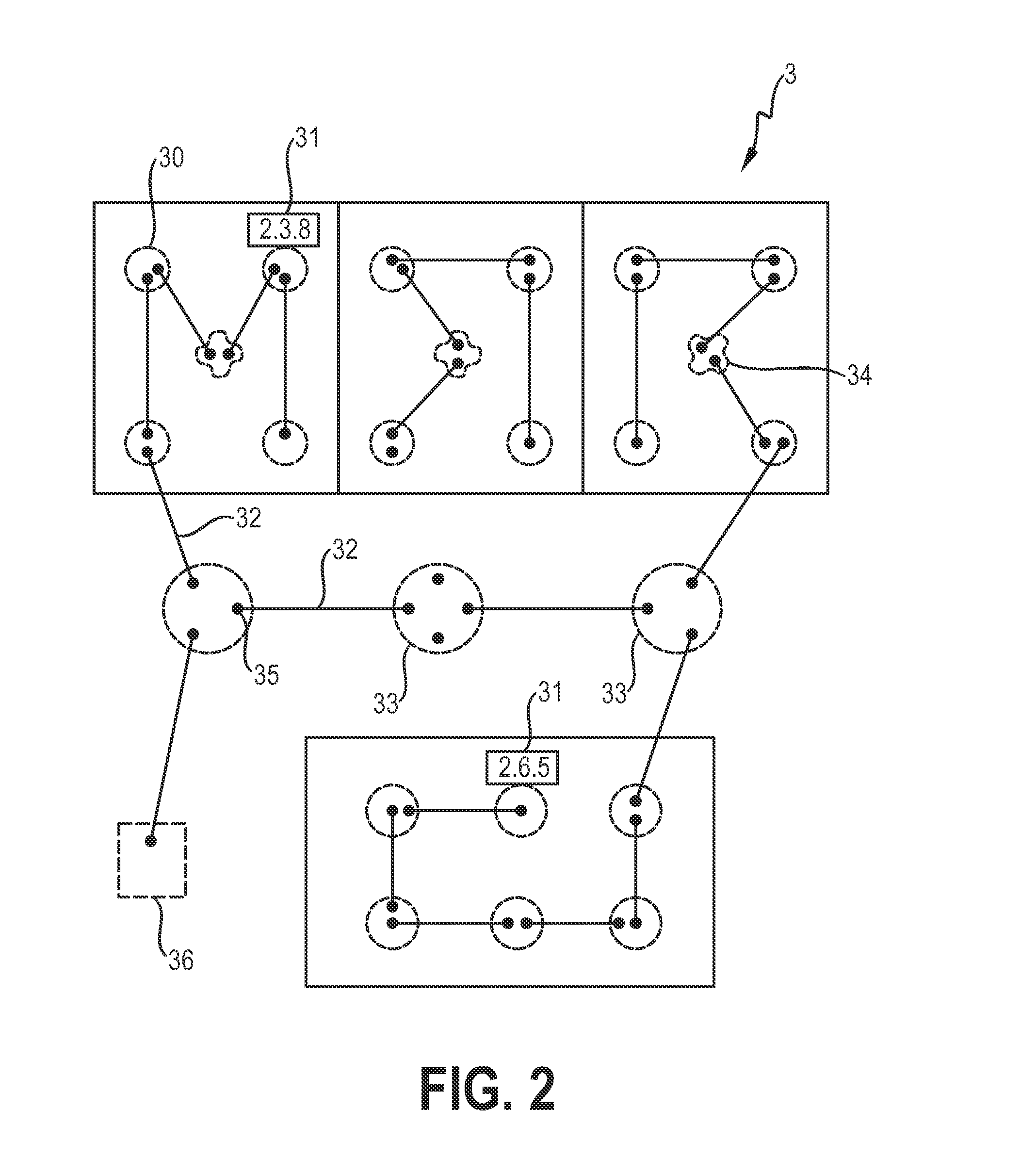Method of performing automatic commissioning of a network
a technology of automatic commissioning and network, applied in the field of automatic commissioning of networks, can solve the problems of affecting the overall cost of the system, and involving a lot of manual inpu
- Summary
- Abstract
- Description
- Claims
- Application Information
AI Technical Summary
Benefits of technology
Problems solved by technology
Method used
Image
Examples
Embodiment Construction
[0035]FIG. 1 shows a schematic representation of a floor plan 7 of a building with rooms 70 arranged along a corridor 71. Each room 70 contains a number of lights 80 and a light sensor 81, for example for sensing light levels with the room 70. Further lights are arranged in the corridor 71. The luminaires 80 and light sensors 81 are controllable by a lighting control system for the building. To this end, each luminaire 80 and sensor 81 incorporates a router, which can be a simple two-port bridge 10 or a multi-port bridge 11 or switch 11, as appropriate. For example, a luminaire 80 in a room 70 can incorporate a simple two-port bridge 10, while a luminaire in the corridor 71 can incorporate a switch 11 for passing commands in more than two directions. Each bridge 10, 11 can be realised to control the power supply to its luminaire 80 or sensor 81, so that the luminaires 80 and sensors 81 of the building can be individually and / or collectively controlled by the lighting control system....
PUM
 Login to View More
Login to View More Abstract
Description
Claims
Application Information
 Login to View More
Login to View More - R&D
- Intellectual Property
- Life Sciences
- Materials
- Tech Scout
- Unparalleled Data Quality
- Higher Quality Content
- 60% Fewer Hallucinations
Browse by: Latest US Patents, China's latest patents, Technical Efficacy Thesaurus, Application Domain, Technology Topic, Popular Technical Reports.
© 2025 PatSnap. All rights reserved.Legal|Privacy policy|Modern Slavery Act Transparency Statement|Sitemap|About US| Contact US: help@patsnap.com



